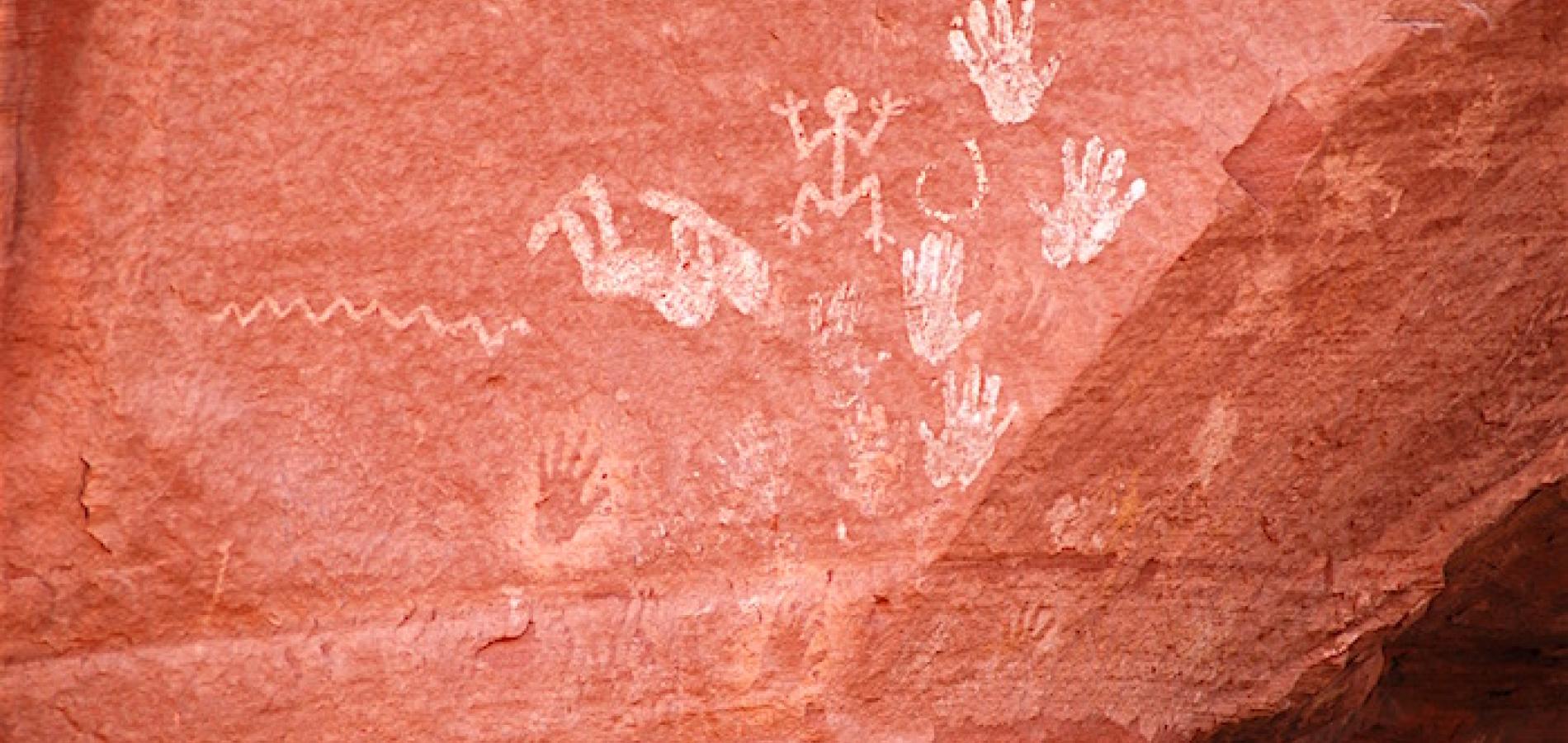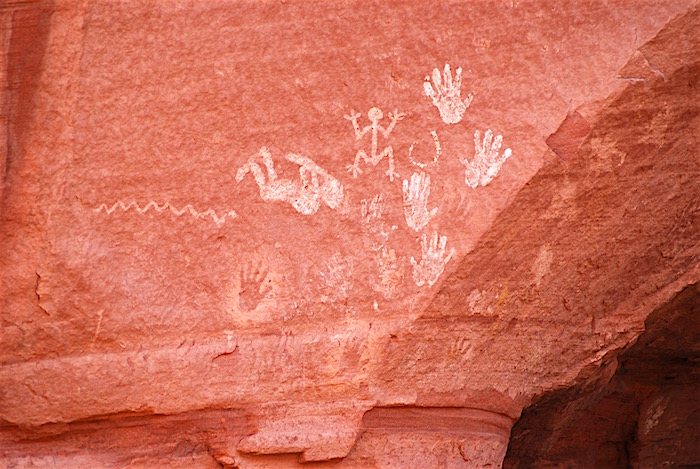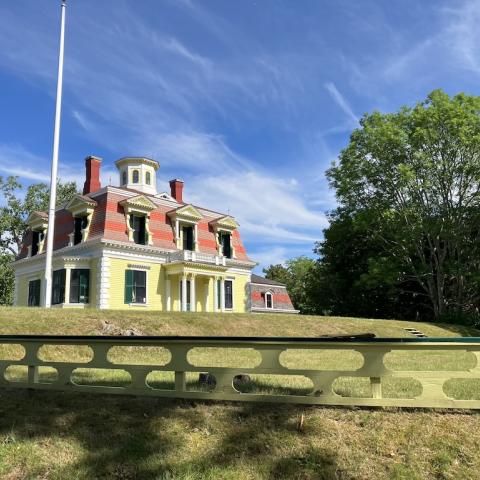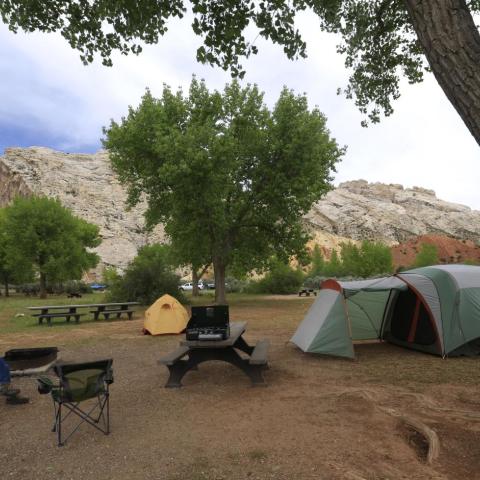Trying to understand how Interior Secretary Ryan Zinke views himself as a conservationist cut from the mold of Theodore Roosevelt is an ongoing challenge. While he wants to bolster the ranks of hunters and anglers, the secretary also wants to shrink some national monuments, allow target shooting on as many public lands as possible, and allow hunters to chum for bears with donuts and greasy loaves of bread.
Secretary Zinke also would toss out an historic agreement aimed at preserving the greater sage grouse and wants to hasten more energy development on public lands even though "(T)hrough the 2015 fiscal year, a record 7,950 drilling permits on federal leases were not being used."
In pro-Trump Utah, the U.S. Bureau of Land Management is being driven by Interior officials to open up more lands for energy development. The agency has gotten so driven that even the Republican governor, Gary Herbert, has asked the BLM to reevaluate its decision to offer leases close to Dinosaur National Monument to "ensure energy developments can successfully coexist with outdoor recreation."
Under Secretary Zinke, the National Park Service did away with a ban on the sale of disposable plastic bottles and scuttled a director's order signed by former Park Service Director Jon Jarvis last year that reaffirmed the agency's “predominant” duty as protecting natural and cultural resources.
With such actions, one has to wonder if Mr. Zinke recalls President Roosevelt's statement that, "(T)he nation behaves well if it treats the natural resources as assets which it must turn over to the next generation increased and not impaired in value."
Mr. Zinke's latest questionable move was a secretarial order he signed Friday to "support sportsmen and enhance wildlife conservation." The order came eight days after the U.S. Fish and Wildlife Service released a report noting that "more than 101 million Americans – a staggering 40 percent of the U.S. population – participated in some form of fishing, hunting, or other wildlife-associated recreation such as birdwatching or outdoor photography."
What caught the attention of the Theodore Roosevelt Conservation Partnership in the report that same day was that the ranks of hunters had declined by 2.2 million since 2011. Secretary Zinke mentioned that Friday in his secretarial order, which he said would aim to "improve wildlife management and conservation, increase access to public lands for hunting, shooting, and fishing, and put a new and a greater emphasis on recruiting and retaining new sportsmen conservationists."
Hunting and fishing have long traditions in America, and concern over the slow decline in hunters is not new. The cause has been parsed by many. Google "decline in hunting" and you'll get 36 million results in less than a second. Some who have analyzed this dilemma have pointed to the growing costs of hunting, the shrinkage of lands to hunt on, the urbanization of the United States, and a lack of interest among younger generations to hunt. The methods used by Fish and Wildlife Service staff to produce these studies also have been questioned, with some in Alaska saying the numbers for their state are dead wrong.
(It shouldn't go unnoted that so concerned are some in Congress about the decline in hunting that the House is considering the questionably labeled Sportsmen’s Heritage And Recreational Enhancement Act that would allow hunters to use armor-piercing bullets and silencers on their weapons.)
Whatever the cause, Mr. Zinke wants to reverse the decline in hunting and is trying everything he possibly can to do so, including quoting President Roosevelt in his order: "In a civilized and cultivated country, wild animals only continue to exist at all when preserved by sportsmen."
Now, across the National Park System, there are myriad destinations for hunters and anglers, whether you want to pursue waterfowl at Cape Hatteras or Cape Lookout national seashores in North Carolina, wild turkeys at Cape Cod National Seashore in Massachusetts, feral pigs or deer at Cumberland Island National Seashore in Georgia or Big Thicket National Preserve (which also has seasons for squirrels, rabbits, and waterfowl) in Texas, or dall sheep and moose in Denali National Park and Preserve in Alaska. And the list goes on. It gets longer when you consider fishing in the park system.
But the secretary wants more access and opportunities, and in his order directed those within the National Park Service and Bureau of Land Management who oversee national monuments to "amend National Monument Management Plans to include or expand hunting, recreational shooting, and fishing opportunities" where possible.
And that provision caught the attention of park advocates.
"This Secretarial Order is a solution in search of a problem," said Kristen Brengel, vice president of government affairs for the National Parks Conservation Association (and a board member of National Parks Traveler). "Our national parks continue to welcome visitors in record-setting numbers to enjoy camping, fishing, hiking, wildlife-viewing, and countless other activities. Not to mention that, from Cape Hatteras National Seashore to Mojave National Preserve, more than 60 of our national park sites currently offer hunting opportunities within park boundaries, and countless sites offer fishing.
“As Secretary Zinke’s press release states, a new U.S. Fish and Wildlife Service survey found 2.2 million fewer hunters in America now than in 2011," she added. "On the other hand, our national parks have seen a 13 percent increase in visitors over the past two years, and welcomed a record-setting 331 million people in 2016. Supply and demand tells us there are already plenty of opportunities for sportsmen and women on millions of acres of public lands. Instead, Secretary Zinke should consider adding more national parks and monuments to the system to meet the public’s increased demand.”
At the Coalition to Protect America's National Parks, Maureen Finnerty not only couldn't think of any hunting or fishing access problems in the National Park System, but wondered if the secretary's order violates "the proclamation orders or legislation that established" national monuments.
"Nowhere in the order is there any discussion of the impact of these activities on the resource," Ms. Finnerty added. "This seems to be a consistent troubling trend of this administration – they promote lots of activities and initiatives, but have shown no concern for the impact of any of them on park resources."
The secretary's desire to see national monuments opened up to target shooting is particularly curious. Considering all the petroglyphs and pictographs in the Southwest that have served as targets over the decades, is this really a good idea? In Utah, one of many states with reports of rock art serving as targets, the BLM last December decided to close 2,000 acres to target shooting in part because of "trigger trash."
Beyond that, while wildfires have plagued the West this summer, prompting Secretary Zinke to tell public land managers that they should contract private companies to reduce fuel loads if they can't handle it, more than a few wildfires have been sparked by target shooting on public lands.
In California, the issue has prompted state officials to urge target shooters to practice their aim "in areas free of dry vegetation — and avoid shooting on hot windy days," conditions not always found on public lands. And in Nevada, officials from Humboldt-Toiyabe National Forest have expressed concern over target shooting and wildfires.
Frankly, it's not clear that the public landscape can handle such an approach to conservation as Secretary Zinke would like to see when it comes to energy development, baiting bears, target shooting, what's best for sage grouse, and his general views on "public-private partnerships" on public lands.






 Support Essential Coverage of Essential Places
Support Essential Coverage of Essential Places







Comments
You see, Lee? My original guess in this thread was right.
There are three classes of men; lovers of wisdom, lovers of honor, and lovers of gain.
Plato
Why stop with hunting & fishing? How about adding not just grazing and hard rock mining, but also coal mining, commercial fishing, and logging as "traditional uses" to be restored to National Monuments beyond those recommended for shrinking. That's the language in Secretary Zinke's draft report and recommendation on the newer large National Monuments:
https://assets.documentcloud.org/documents/4052225/Interior-Secretary-Ry...
or, if you don't want to read the full (leaked) draft document, here's an article that excerpts parts of the draft report:
https://www.washingtonpost.com/national/health-science/shrink-at-least-4...
There's a Wall Street Journal article too, but it's behind a paywall.
Zinke doesn't think that views ("viewsheds") or "ecosystems" are worthy of protection under the Antiquities act, only "specific objects".
Commercial fishing in the Marine National Monuments simply removes their value as Marine Protected Areas that help recover fishery stocks for (commercial) catching outside of the Monument boundaries. I don't think that commercial logging is viable at Katahdin Woods & Waters. To me, Coal Mining in Grand Staircase-Escalante is simply willful vandalism.
This is only a draft report, not a final report, not a draft Presidential proclamation or Executive Order. Perhaps enough public pushback can prevent this effective gutting of National Monument designations that protect natural features.
Or, per ecbuck, maybe this isn't poor management by Zinke but what ec & others voted for. Maybe "unimpaired for the enjoyment for future generations" either doesn't apply to potential coal mines or else "reclaimed" strip mines are more enjoyable and I simply didn't know how to enjoy and appreciate them when I last saw one. Or, to be fair to ecbuck, maybe this report is not what he was referring to in his post about the Trump administration not doing things the way previous administrations did. Perhaps he doesn't think coal mines in National Monuments are good management.
Tomp, thank you for an excellent and thoughtful posting.
The article states that Secretary Zinke...'scuttled a director's order signed by former Park Service Director Jon Jarvis last year that reaffirmed the agency's "predominant" duty as protecting natural and cultural resources.' Actually, the Secretary does not have administrative or legal authority to alter the primary mission of the NPS. This mission is "preservation" and has been reaffirmed numerous times by Congress as well as Federal Courts. Redress by Congress or the Courts is the only way the mission statement of the NPS or individual parks can be altered.
John, the mission of the Park Service as stated in the Enabling Act is to "conserve, unimpaired . . . for the enjoyment of future generations." BUT, the history of the Park Service has been to place most of the emphasis of park management on the side of conservation with enjoyment being somewhat secondary. That's what Director Jarvis' policy was supporting.
There have in the past been other attempts to shift management emphasis away from conservation to enjoyment. The most recent came during the Bush/Cheney administration when a political appointee named Mark Hoffman went to work secretly to rewrite the management guidelines of the service to open parks to greater opportunities for "enjoyment" and "recreation." That would likely have opened most park trails to motorized ATV use and water to motorized water craft. This sounds like a resurrection of that crap.
When this clandestine effort was leaked, the uproar resulted in formation of the Coalition of Retired Park Service Employees with a few hundred career NPS people going to war to defeat it. (It's now called the Coalition to Protect Our National Parks.)
Here is the link to Coalition's website: protectnps.org
And here is a short statement from the website explaining one of the reasons the Coalition was formed: "
In 2005, the Coalition exposed an attempted rewrite of NPS Management Policies, essentially changing the Service from a conservation to a recreation agency. The project was abandoned in large measure because of our advocacy work."
Lee
I do read your posts and believe that if we had more time or space for comments we would find we are mostly in agreement. Legally, it is the Administrative Procedures Act that gives park managers considerable discretion in decisionmaking. Courts will give the NPS wide discretion unless decisions can be shown to be arbitrary or capricious. Absent this, Courts will defer to the NPS. Zinke cannot rewrite the NPS mission statement if the rewrite differs in substance from the Organic Act (and other legal sections) that define the NPS mission or Court decisions that have upheld the mission. A rewrite of NPS policy to bring greater emphasis on use/facilities/enjoyment is likely not to be upheld if it is determined to be in violation of the Organic Act or Court decisions. In theory, use of a rewritten NPS Management Policies Handbook would not be viable if it were shown that the rewrite conflicts with the express meanings of Congress and/or Federal Courts. All I am trying to say is that the most important language is the Organic Act and Federal Court Decisions.
BTW, I have been a member of the Coalition to Protect Our Parks. My days spent working in the High Country of Yosemite were a grand gift.
Be well.
John Lemons
Thank you, John. I think we are both correct in that I'm warning that there are possible dangers in an order from Zinke while you are pointing to means by which any rewrite of management policies might be opposed on legal grounds. But my point is that Donald and Zinke could do a lot of damage by fiat if they decide to try it.
This is a time when all who care about our parks need to be vigilant and ready to fight for our parks WHEN it becomes necessary. Thank goodness we have the Coalition and other organizations that are prepared to do it. We need to support them in any way we can.